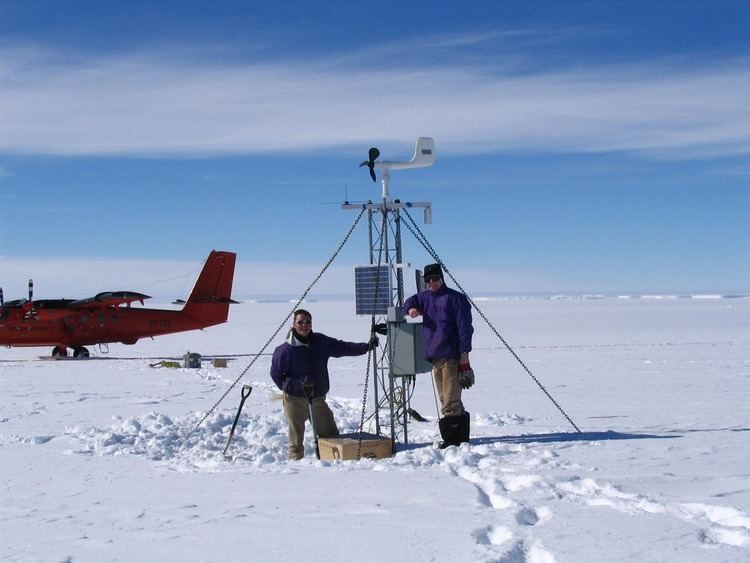 | ||
An automatic weather station (AWS) is an automated version of the traditional weather station, either to save human labour or to enable measurements from remote areas. An AWS will typically consist of a weather-proof enclosure containing the data logger, rechargeable battery, telemetry (optional) and the meteorological sensors with an attached solar panel or wind turbine and mounted upon a mast. The specific configuration may vary due to the purpose of the system. The system may report in near real time via the Argos System and the Global Telecommunications System, or save the data for later recovery. In the past, automatic weather stations were often placed where electricity and communication lines were available. Nowadays, the solar panel, wind turbine and mobile phone technology have made it possible to have wireless stations that are not connected to the electrical grid or hardline telecommunications network.
Contents
Sensors
Most automatic weather stations have
Some stations can also have
Unlike manual weather stations, automated airport weather stations cannot report the class and amount of clouds. Also, precipitation measurements are difficult, especially for snow, as the gauge must empty itself between observations. For present weather, all phenomena that do not touch the sensor, such as fog patches, remain unobserved. The change from manual observations to automatic weather stations is a major non-climatic change in the climate record. The change in instrumentation, enclosure and location can lead to a jump in, for example, the measured temperature or precipitation values, which can lead to erroneous estimates of climate trends. This change, and related non-climatic changes, have to be removed by homogenization.
Data-logger
The data-logger is the heart of the Automatic Weather Station.
In high quality weather stations, the data-logger may be designed by the supplier to be the perfect solution for a particular meteorological client. Indeed, usually data-loggers found in the market don't fit the requirement in terms of power consumption, inputs, communication, protection against animals (ants, rats, etc.), humidity, salty air, sand, etc.
The main functions of a data-logger are:
Enclosures
Enclosures used with automatic weather stations are typically weather proof fiberglass, ABS or stainless steel, With ABS being the cheapest, cast aluminium paint or stainless steel the most durable and fiberglass being a compromise.
Power supply
The main power source for an automatic weather station depends on its usage. Many stations with lower power equipment usually use one or more solar panels connected in parallel with a regulator and one or more rechargeable batteries. As a rule of thumb, solar output is at its optimum for only 5 hours each day. As such, mounting angle and position are vital. In the Northern Hemisphere, the solar panel would be mounted facing south and vice versa for the Southern Hemisphere. The output from the solar panels may be supplemented by a wind turbine to provide power during periods of poor sunlight, or by direct connection to the local electrical grid. Most automated airport weather stations are connected to the commercial power grid due to the higher power needs of the ceilometer and present weather sensors, which are active sensors and emit energy directly into the environment.
Mast
The standard mast heights used with automatic weather stations are 2, 3, 10 and 30 meters. Other sizes are available, but typically these sizes have been used as standards for differing applications.
